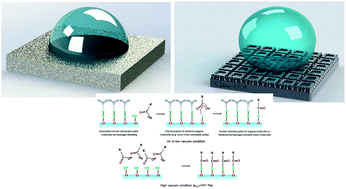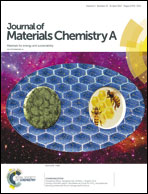Robust fabrication of μ-patterns with tunable and durable wetting properties: hydrophilic to ultrahydrophobic via a vacuum process†
Abstract
Micro-patterns with a single roughness were fabricated using a nanosecond laser source on stainless steel sheets to demonstrate a tunable and durable lotus effect via a vacuum process in a very short time interval. The wettability transitions of the vacuum processed μ-patterns were measured using the static water contact angle and found to be in the Cassie–Baxter state. The roll-off and static contact angle are 5° and 180°, respectively, for the μ-pillar and μ-channel structures. The surface exhibits bouncing and rolling of water droplets due to the composite interface. The transition of the wetting properties is a function of the vacuum process time and the minimum time required for the transition from ultrahydrophilic to ultrahydrophobic is found to be 15 minutes. The surface chemical analysis by XPS suggests that the chemisorption of hydrocarbon molecules onto hydroxylated metal oxide surfaces is much more effective under high vacuum than under an air atmosphere, due to the very low water vapor content inside the vacuum chamber, which avoids the passivation of reactive OH sites by hydrogen bonded water molecules. The wetting properties can be recycled by alternate plasma cleaning and vacuum processing of the laser-patterned surface.



 Please wait while we load your content...
Please wait while we load your content...